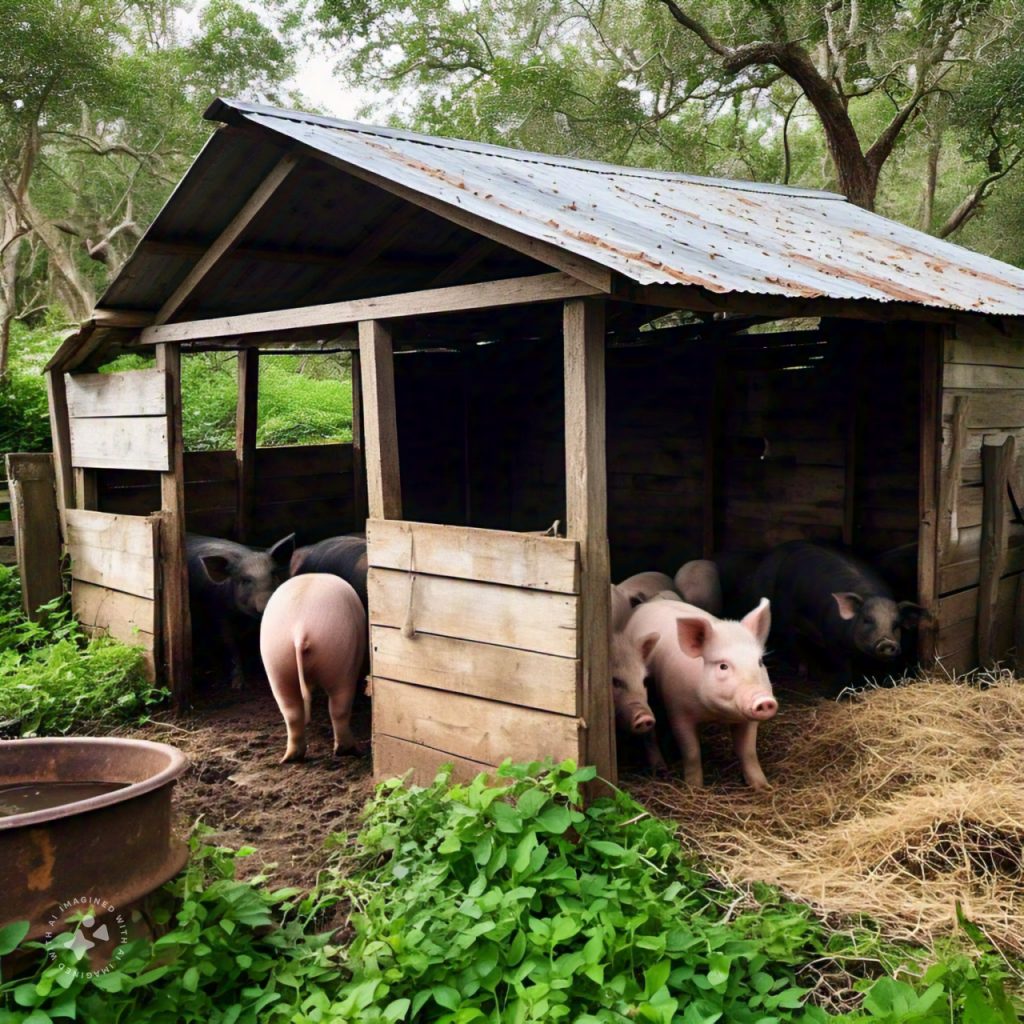Small-scale pig farming at home is an excellent way to produce high-quality pork, contribute to food sustainability, and generate additional income. With the right knowledge and resources, even beginners can raise pigs successfully. This guide will walk you through every aspect of small-scale pig farming, from setting up your farm to managing health and marketing your products.
Why Start Small-Scale Pig Farming at Home?
Small-scale pig farming is growing in popularity due to its benefits:
- High-Quality Meat Production: Home-raised pigs often provide better-tasting, healthier meat.
- Sustainability: Reduce food waste by feeding pigs kitchen scraps, though this must be balanced with their nutritional needs.
- Profitability: Pigs grow quickly and have a high feed-to-meat conversion rate, making them a lucrative option.
- Low Space Requirements: Compared to other livestock, pigs can be raised on smaller plots of land.
1. Choose the Right Pig Breed
Selecting the right breed is critical to the success of your farm.
- Meat Production:
- Large White: Known for rapid growth and quality meat.
- Duroc: Produces flavorful pork with good marbling.
- Breeding and Sustainability:
- Landrace: Excellent for breeding, with large litter sizes.
- Berkshire: Hardy and produces high-quality pork.
- Local Adaptation: Choose breeds suited to your climate and environment.
2. Set Up Proper Housing
A well-designed pig pen is essential for the health and well-being of your pigs.
- Space Requirements: Provide at least 50 square feet per pig to allow movement.
- Flooring: Use concrete for easy cleaning, with bedding like straw for comfort.
- Shelter: Ensure pigs have a dry, shaded area to protect them from extreme weather.
- Fencing: Use sturdy fencing to keep pigs secure and prevent escapes.
3. Nutrition and Feeding
Pigs are omnivorous, but their diet must be balanced for optimal growth.
- Commercial Feed: Provide pig starter, grower, and finisher feeds based on the pig’s age.
- Kitchen Scraps and Forage: Supplement their diet with vegetables, fruits, and garden waste, but avoid toxic foods like avocado and raw potatoes.
- Water Access: Fresh, clean water should always be available. Pigs can drink up to 5 gallons a day.
- Feeding Schedule: Feed pigs 2-3 times a day to prevent overeating and waste.
4. Health and Disease Management
Healthy pigs grow faster and are more productive, making disease prevention essential.
- Vaccinations: Protect against diseases like swine flu, foot-and-mouth disease, and porcine parvovirus.
- Parasite Control: Deworm pigs regularly to prevent internal and external parasites.
- Biosecurity:
- Limit visitors to your farm to prevent disease introduction.
- Quarantine new pigs for 2-3 weeks before integrating them into the herd.
- Observation: Monitor pigs daily for signs of illness, such as reduced appetite, lethargy, or respiratory issues.
5. Breeding Basics
If you plan to breed pigs, understanding the process is vital.
- Mating Age: Sows (female pigs) should be 7-8 months old before mating.
- Gestation Period: Approximately 114 days (3 months, 3 weeks, 3 days).
- Litter Size: Expect 8-12 piglets per litter, depending on the breed and care.
- Weaning: Piglets can be weaned at 6-8 weeks of age.
6. Waste Management
Pig farms produce significant waste, which must be managed responsibly.
- Composting: Turn pig manure into nutrient-rich compost for your garden.
- Biogas Production: Convert waste into biogas for cooking or heating.
- Regular Cleaning: Maintain a clean pen to prevent odor and health issues.
7. Market Your Pigs and Products
Marketing is crucial to turning a profit from your pig farming venture.
- Direct Sales: Sell pigs directly to consumers, local butchers, or restaurants.
- Value-Added Products: Offer pork products like sausages, bacon, or ham to increase profitability.
- Local Events: Participate in farmers’ markets or local fairs to build a customer base.
- Online Presence: Use social media to promote your farm and products.
8. Understand Legal and Ethical Considerations
Compliance with regulations ensures smooth farm operations.
- Zoning Laws: Check local zoning requirements for keeping livestock on your property.
- Licensing: Obtain necessary permits for selling pork or live animals.
- Animal Welfare: Adhere to humane farming practices to ensure the well-being of your pigs.
9. Recordkeeping for Success
Maintaining detailed records will help you track progress and identify areas for improvement.
- Health Records: Document vaccinations, treatments, and health issues.
- Feeding Logs: Track feed consumption and costs.
- Financial Records: Keep records of expenses and income to calculate profitability.
10. Start Small and Scale Gradually
As a beginner, it’s best to start with a small herd and expand as you gain experience.
- Recommended Starting Herd: Begin with 2-4 pigs to learn the basics of pig farming.
- Growth Strategy: Use profits to reinvest in better housing, more pigs, or marketing efforts.
- Experimentation: Try different feeding strategies or breeds to determine what works best for your setup.
Conclusion
Small-scale pig farming at home is a rewarding endeavor that can provide high-quality pork, reduce waste, and generate income. By choosing the right breed, providing proper care, and adhering to best practices, you can establish a successful backyard pig farm. Use this guide as your roadmap to ensure your venture thrives and grows over time.

